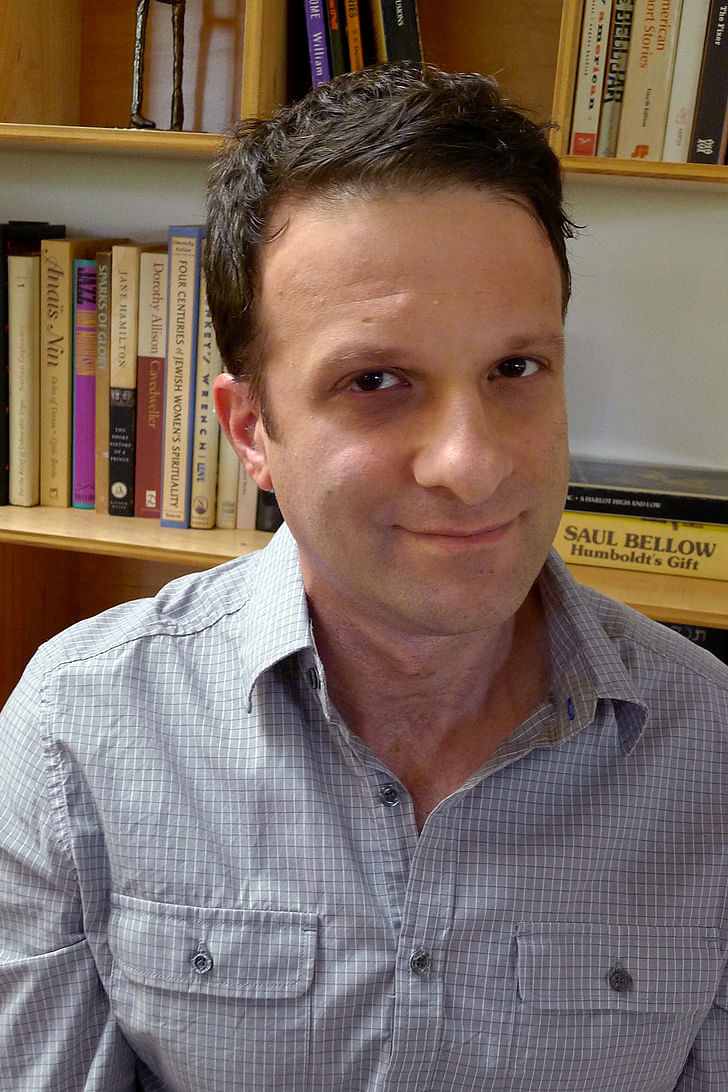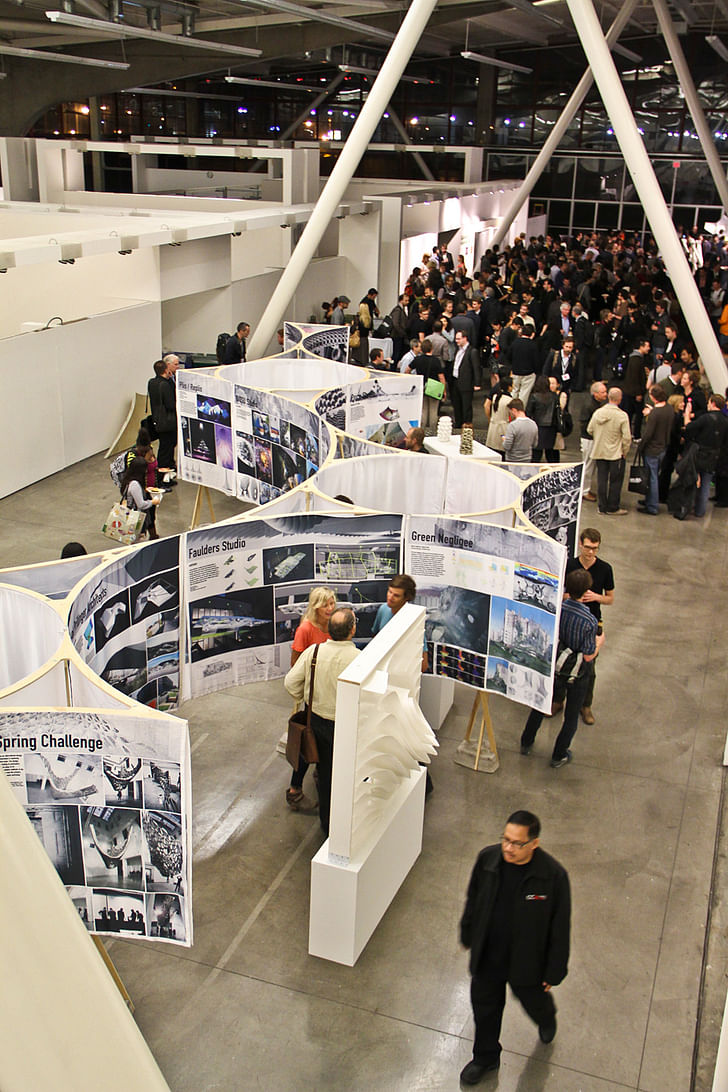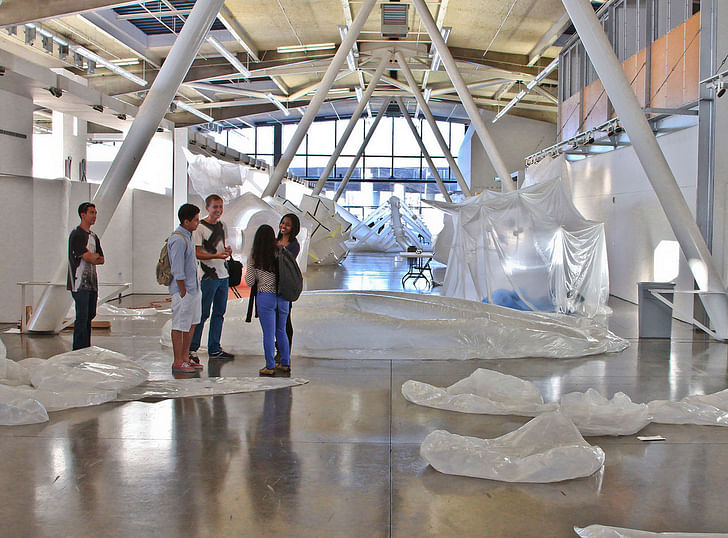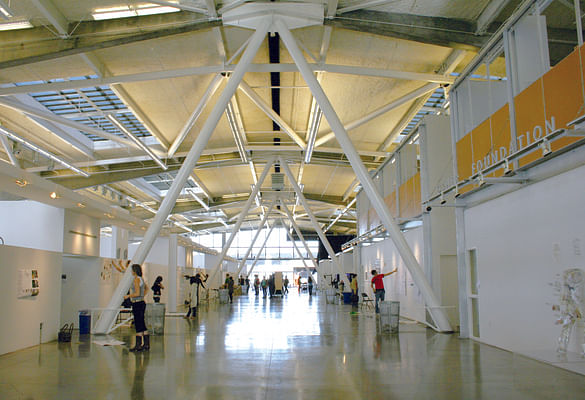

The Deans List is an interview series with the leaders of architecture schools, worldwide. The series profiles the school’s programming, as defined by the head honcho – giving an invaluable perspective into the institution’s unique curriculum, faculty and academic environment.
For our first installment, we spoke with David Gissen, the Director of Architecture at California College of the Arts in San Francisco.
Nestled within San Francisco's SoMa neighborhood, accessible to equal parts start-ups and shake-downs, California College of the Arts occupies a remarkable place within the local economy and culture. CCA's Director of Architecture, David Gissen, describes his department as dynamically receptive to nearby tropes such as start-up entrepreneurialism and maker-culture practices, simultaneously aiming to produce exciting, experimental architecture. Gissen is an architectural historian, theorist, critic and curator, recently transplanted from the East Coast to serve as CCA's interim architecture director. He spoke with Archinect about how CCA and San Francisco encourage a certain vanguard design culture, to collaborate with anyone from city policymakers to those occupying the bohemian "margins of culture".

Amelia Taylor-Hochberg: Describe the architecture programs at California College of the Arts.
David Gissen: We have three programs: an undergraduate BFA in interior design, an undergraduate BArch, and we have a graduate MArch program also. Within our Graduate Program we also have a Masters of Advanced Architectural Design (MAAD – that degree enables students to concentrate in several different areas, including urban design, digital design, history/theory and critical practices as we call it). I would say that one of the things that characterizes all of the architecture programs specifically is an interest in experimentation, in alternative modes of pedagogy in architecture, and I think all of our faculty are really pushing experimentation. Even the simplest things – whether you’re talking about the work that’s done in design media class, studio, even the character of the history/theory courses – deals with experimental approaches to these pedagogical aspects of the discipline. We have some of the most interesting and experimental people working in digital media today; people that are teaching students how to build robots that make architectural drawings, making very unusual intersections between analogue work and digital design. We have people doing very interesting experiments with interior design, with history. One of our faculty, Irene Cheng, developed this app that enables people to explore utopian proposals in various cities in the United States, which was just featured at the 2012 Venice Biennale. Two of our faculty are some of the only Americans to be included in a major show at the FRAC Center, a museum in France. Thom Faulders and Andrew Kudless; they’re great architects to look at. The faculty who did the robot-drawing, Nataly Gattegno and Jason Kelly Johnson, just won a young architect’s prize.
I think something you really feel in the Bay Area, is the obvious role that technology plays as a very vanguard part of American culture, or world culture generally. But there’re all kinds of other vanguard aspects to the Bay Area: For example, this is an epicenter for thinking about civil rights, whether it’s the free speech movement, disability rights, Asian-American rights, LGBT rights, or the legacy of the Black Panthers in Oakland. These are all great examples of how the Bay Area is a real incubator for vanguard culture. We try to tap into all of it – not an easy task for an architecture, art and design school.
AT-H: What would you like to accomplish as Director of Architecture?
DG: My title may be interim, but we’re going full steam ahead this year with a whole host of events. As I described earlier, we are offering some one-of-a-kind studios: Jason Johnson and another faculty member named Matt Shiloh are having their students build robotic machines that make architecture drawings and models, as a way to think about ideas of representation, fabrication, and obviously digital design media. In the area of history and theory, we have a symposium that will be staged called “Test Sites” – it’s about historians who work outside the text, who think of history as an opportunity to make objects and other things that have historical content. From Columbia we have Jorge Otero-Pailos who does these fantastical preservations of dust, and a CCA faculty member named Amy Balkin who develops unusual archives to document historical trauma and change.

As part of the conference, we’re also staging an exciting exhibition about historians, artists, preservationists etc. who have turned to scents, to capture and reconstruct lost spaces from the past. Something you really feel in the Bay Area, is the obvious role that technology plays as a very vanguard part of American culture, or world culture generally. All of these activities also point to a kind of Maker Culture, which is a big part of CCA. We also have a fantastic lecture series this year, bringing in all kinds of exciting people. For the first time we’re going to do some events that connect the architecture program with the LGBTQ history of the Bay Area. Our faculty member Neal Schwartz is running a housing studio with our graduate students that’s exploring housing for LGBTQ seniors in San Francisco. This vibrant population is getting older, the question is what is their future role in the city? In the spring we’ve invited Aaron Betsky to come to campus to revisit the ideas in his book Queer Space, which is now almost 20 years old, in light of San Francisco's efforts to try to figure out how to preserve or historicize or think about the spaces of its LGBTQ history in the face of urban development.
AT-H: What are the biggest challenges or problems facing architecture students today?
DG: In terms of problems, that’s a very interesting topic in architectural education. You travel to architecture schools in the U.S. and see students grappling with large problems — environmental degradation, sustainability, migrating populations, how to house people — one thing I’ll say, one thing that we try to encourage within our students, is to not just use architecture to solve these specific problems that we’re facing today, but we also want them to use architecture to identify problems that our generation didn’t know existed. That’s something I seized upon. CCA is a place where we encourage students to develop their own point of view, to be able to identify the issues they think are pertinent, and the issues that they think architecture has a unique capacity to not only address, but in some ways to identify and tease out. For example, last year in our thesis group the award-winning project was by Cesar Lopez and about the U.S./Mexico border. This is a subject that you see in many contemporary American thesis projects, but I think we were all taken with what Cesar Lopez accomplished – rather than try to make the experience of crossing the border more gentle, per se, or more intense, depending on your architectural and political point of view, what he did was make the crossing of the border more ambiguous. He reconstructed the Rio Grande River in more or less the paths that it followed before it was channeled by the U.S. in mid-century. In so doing, he begins to destroy, or is forced to figure out how to integrate, the river into Juarez and El Paso. It was an entirely original take on the problems of the border and exemplifies that integration of progressive political and architectural thinking we value here.

AT-H: How does CCA prepare students for employment after graduation?
DG: We are an art and design college, and our college has one of the highest levels of employment, highest levels of “return of investment”. All of our architecture students complete an internship when they’re at CCA; it’s part of their requirements. They're already in touch with firms, and we try to put students in contact with firms that share their interests. The Bay Area has an incredibly vibrant economy, that weathered the strains on the the American economy in the past 5-6 years. The Bay Area wasn’t unscathed, but it’s climbing it's way out of the recession very aggressively. We have a very high level of employment, business innovation, development of new businesses in all areas – architecture included.
What would it mean if an architecture school was connected with the margins of culture? How do you define the margins of culture? Recently, we were rated as one of the top art and design colleges, in terms of the salary potential of our graduates, which is an amazing thing*. We do not build our curriculum around the demands of business; we are not a trade school, but we are obviously pleased at the enormous employability of our students. The internship is one reason for this and so is the Bay Area economy. But another reason is that we’re at an art and design school, and when you're at a school where you’re surrounded by artists, you’re forced to be entrepreneurial. When someone attends art school, they have to think about what they’re going to do professionally in a way that’s much different than an architect that imagines going directly from school to an office. It’s very interesting when you’re around artists who don’t necessarily have that kind of security; that don’t have such an easily objectified sense of where employment might lie. I think that begins to affect our students. We have unusually entrepreneurially students. I can’t think of another architectural school in which you see so many students graduate and start their own firms, it’s amazing. By entrepreneurial I’m not saying that our students or our faculty are necessarily oriented towards business per se – by entrepreneurial I mean they see ways that they can develop opportunities on their own, within and outside of an academic context. San Francisco has this culture called “start-up culture” and it’s infectious, in terms of exploring something that interests you and making it happen.
AT-H: How do you research and familiarize yourself with trends within the architectural profession/academia? And how to do you adapt these observations into programming and student policy for the 21st century?
DG: I think lots of architecture schools are interested in working with cities, and with centers of power like a municipal office – some powerful agent that has the ability to transform and legislate the shape of the city. It’s an exciting thing for architecture students to be involved in those forms of power. On the one hand I’d say, that interests me, but one thing that I’m also interested in is how architects connect with the margins of urban culture, whatever those may be. To me, that presents the very same issue: a) how does that relate to design, but (b) it’s more complicated because what are the margins of culture? The margins of culture always seem to brush up against what we think a city to be, or our place in it. It’s not necessarily comfortable. I'm excited by the opportunity for us to connect to more marginal forms of power that imagine shaping the city. The LGBTQ initiative is an aspect of that and we'll see where this takes us. In the future we could try some other things and see what happens.

In terms of the larger issue, let’s say policy and design, I’m very interested in this. We have a lot of policy-driven design culture in the Bay Area – for example the kinds of things like National Parking Day, there’s a lot of that here. I think there’s a lot of interest for architects to connect with the power that appears to be shaping the city. But a thing that would be exciting, and an opportunity in San Francisco, would be to connect with a kind of marginal form of power that imagines itself to try shaping the city.
This is a place where you can explore the limits of your particular discipline. It’s very exciting, and it's addicting. Recently, I tweeted about this idea, and a nameless architecture dean wrote back and I think he was really frightened by the idea, saying that the margins don't have a place in architecture education. But I don’t think that’s true, especially when you teach at an art and design school where the margins of culture are such a large aspect of education. What would it mean if an architecture school was connected with the margins of culture? How do you define the margins of culture? You can’t, which is part of the issue, but you know it by the experience that you have when you see it. Because when you see it, when you experience it – whether it’s at an art opening, or a protest, or at a cafe sitting among people – it makes you question your role in your life and city, and makes you want to live a little bit differently. We’ve all experienced it at various times. The experience of power is something that excites architects and architecture students, brushing up against certain kinds of power that can help us realize our visions for the city. But within the margins of the city lies another vision of what a city can be that are also extremely exciting.
AT-H: How do you situate architecture academics in contrast to local politics and economies?
DG: I think it’s partly geography. CCA is in the middle of a city, in an open shed-like structure which was built back in the mid-century, and seems very open to the city. As an instructor, I think what’s exciting about CCA is that I wouldn’t make a distinction between the "real world" and the "academic world", but I would say that CCA is very much tapped into the world. For better or for worse, CCA does not feel like an ivory tower. It doesn’t feel like we are beholden to the intellectual or material problems that are particular to academics at other institutions. Our faculty and our students feel a real sense of independence, although we are completely connected to major debates within architecture. Our history and theory faculty are very tapped into current debates, our digital faculty are very tapped into current debates, but you also feel that something else is entering into the picture here – something entrepreneurial, it’s a word that a lot of people use to describe the academic culture at CCA. Faculty in particular and also students are trying to make assemblages out of people in industry and in academia to work on problems that interest them. It doesn't feel like a lot of East Coast architecture schools, where everyone's gazing at their navels and talking about "autonomy". That’s not what we do here; we’re trying to develop our own discourses in many ways, discourses that other people can relate to, but that are emerging from here. It is a struggle to do that – speaking personally, when I came from the East Coast I found San Francisco a little bit disorienting. It wasn’t immersed in East Coast architecture debates. At CCA, my colleagues would ask me: what are you doing that’s novel? What are you doing that’s alternative, or vanguard or new? To someone who's primarily an architectural historian, it really made me think about what I might do in completely new ways. I felt unleashed, free to experiment, and I think our faculty feel that way too. This is a place where you can explore the limits of your particular discipline. It’s very exciting, and it's addicting, and I honestly can’t imagine being anywhere else.
* http://www.payscale.com/college-salary-report-2013/art-and-design-schools
Former Managing Editor and Podcast Co-Producer for Archinect. I write, go to the movies, walk around and listen to the radio. My interests revolve around cognitive urban theory, psycholinguistics and food.Currently freelancing. Be in touch through longhyphen@gmail.com
2 Comments
Amelia, Psycholinguistics is an interest of mine (not NLP though). what have you been reading on this -and, have you thought of applying any of it in an architecture setting? eric
Take me to your leader
Block this user
Are you sure you want to block this user and hide all related comments throughout the site?
Archinect
This is your first comment on Archinect. Your comment will be visible once approved.